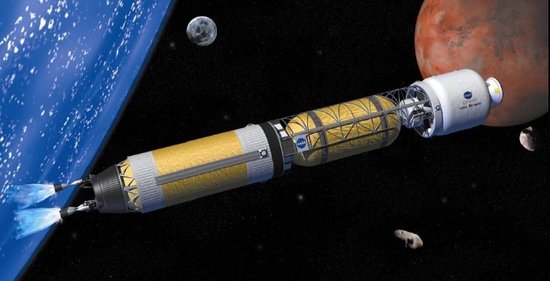According to recent reports from international media, researchers at NASA's advanced aerospace propulsion system have successfully demonstrated the feasibility of a nuclear rocket as a potential propulsion system at the Marshall Space Flight Center. Using non-nuclear fuel to simulate a nuclear rocket power system has significantly accelerated the development of this groundbreaking technology. This innovation could help solve the long-standing challenge of traveling to Mars and other distant star systems.
The nuclear power system cryogenic advancement research group aims to spend the next three years studying spaceflight nuclear power technologies. Since nuclear rocket materials must endure extremely high temperatures, breakthroughs in thermal management are essential. Compared to traditional chemical rocket motors, this technology offers much greater thrust and efficiency, making it a promising candidate for future deep-space missions.

The nuclear rocket system can drastically reduce the travel time to Mars, which in turn helps minimize astronauts' exposure to harmful cosmic radiation during long journeys through space.
To test the performance of different materials, the research team used a nuclear rocket element simulator. The final prototype will incorporate uranium, but no radioactive substances were used in these tests. Scientists employed graphite composites and "cermet" materials—both previously studied by NASA and the Department of Energy. While using nuclear rockets for space propulsion isn't entirely new, NASA had already explored this concept from 1955 to 1973, conducting various feasibility studies. However, with the cancellation of the Manned Landing Mars Project, testing was paused until more recent advancements reignited interest.
The simulation facility focuses on testing fuel elements, materials, and the extreme conditions that space nuclear propulsion systems would face, such as temperatures reaching 2760°C and pressures up to 1000 pounds per square inch.
Mike Hortz, the project leader for the nuclear power system at Marshall Flight Center, believes these tests will help reduce development risks and costs associated with nuclear-powered rockets. The first-generation nuclear-powered cryogenic propulsion system is expected to provide more thrust than chemical rockets, shortening flight times and reducing astronauts’ exposure to harmful radiation. It also supports the broader goal of landing humans on Mars. Additionally, this technology can carry larger payloads, laying the groundwork for even more advanced propulsion systems in the future. As humanity looks to explore deeper into space, significant breakthroughs in power systems will be crucial.
Pneumatic Control Valve,Pneumatic Temperature Control Valve,High Temperature Control Valve,Pneumatic Sleeve Control Valve
CEPAI Group Co., Ltd. , https://www.jscepai.com
